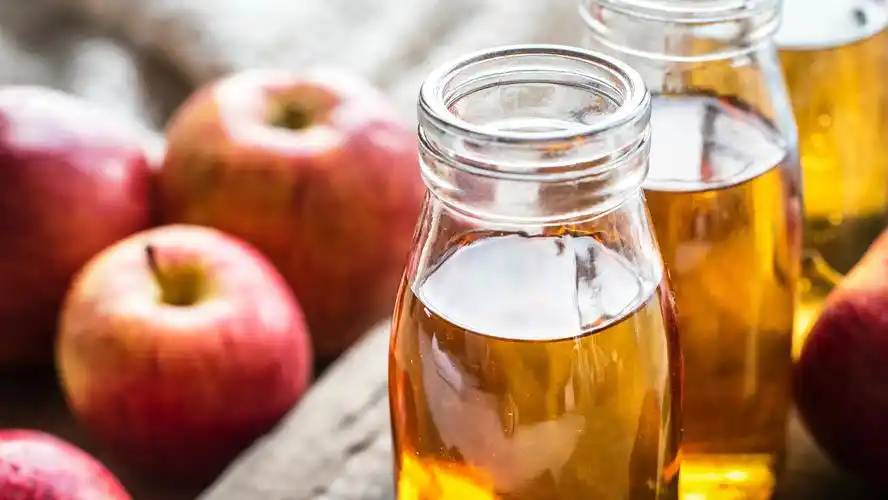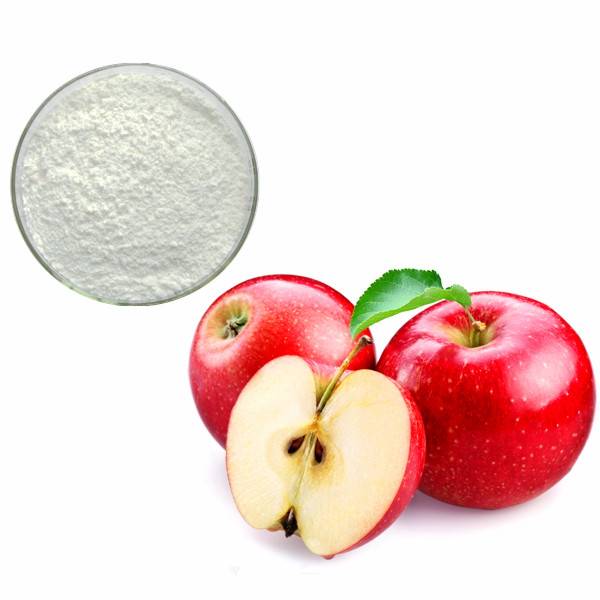Apple Extract 80% Polyphenols Enhances Natural Antioxidant Product Formulations
As environmental pollution intensifies, life pressures mount, とconsumer awareness of anti-aging care significantly rises, global demand for highly effective and safe antioxidant skincare products is surging rapidly. An increasing number of brands are seeking active ingredients derived from nature, with proven efficacy and scientific backing, to meet consumer aspirations for “Clean Beauty” and “green formulations.”
Natural Antioxidant Ingredients Offer Distinct Advantages, Gaining Favor with Brands and Consumers
Compared to traditional synthetic antioxidants, natural antioxidant ingredients possess significant advantages:
· High safety profile and skin affinity, substantially reducing irritation risks;
· Synergistic multi-bioactivity, delivering not only antioxidant benefits but also anti-inflammatory, repairing, and brightening effects;
· Green sustainability, aligning with eco-conscious and ethical consumption trends to enhance brand image.
Apple Polyphenols: The Next-Generation Natural Antioxidant Star
Among numerous natural antioxidants, apple polyphenols stand out exceptionally. Extracted from apples—a food-grade ingredient with medicinal properties—they are rich in polyphenolic compounds (such as proanthocyanidins and geniposidic acid). These offer outstanding free radical scavenging and photoprotective effects, effectively delaying skin aging and improving dull complexion, making them an ideal ingredient for developing premium antioxidant skincare products.
グリーン春 Technology's Apple Polyphenol Extract Infuses Product Upgrades with Competitive Edge
Leveraging advanced extraction technology, Green Spring Technology introduces a high-potency Apple Polyphenol Extract (80% polyphenol content), delivering core advantages to brand clients:
✨ High Concentration · Proven Efficacy — Stable polyphenol content ≥80%, with antioxidant data verified by third-party testing to support efficacy claims;
✨ Natural Purity · Global Compliance — Pure plant extraction with zero chemical solvent residue, meeting major international market regulations;
✨ Versatile Application · Flexible Formulation — Suitable for serums, creams, lotions, masks, and oral beauty supplements, easily integrated into existing formulations;
✨ Custom Support · Rapid Response — Professional technical assistance and tailored solutions to help you create differentiated antioxidant flagship products.
1 Analysis of Core Active Ingredients in Apple Extracts: High-concentration polyphenols lead antioxidant skincare innovation
Apple extract is rich in multiple potent bioactive compounds, with polyphenols (up to 80% content) serving as the core functional components. This provides robust raw material support for upgrading natural antioxidant skincare formulations. Below are its primary active ingredients and をantioxidant applications:
1.1 Polyphenols — The Main Antioxidant Force
Apple extract contains significant polyphenolic compounds, primarily flavonoids and phenolic acids. These components collectively form its exceptional antioxidant system, effectively neutralizing free radicals, mitigating photoaging and oxidative stress, and making it suitable for anti-aging serums, sunscreens, and repair-focused skincare products.
1.2 Flavonoids — Enhancing Skin's Antioxidant Defense
Multiple flavonoids have been identified in apples, including rutin, quercetin, catechin, proanthocyanidins (various polymerization forms like B1, B2, C1), and diverse glycoside derivatives. These components not only elevate overall antioxidant 活動but also synergistically strengthen the skin barrier and improve skin tone. They are widely used in brightening, antioxidant, and anti-first-signs-of-aging products.
1.3 Phenolic Acids — Synergistic Antioxidation and Revitalization
Phenolic acids identified in apples—including chlorogenic acid, caffeic acid, ferulic acid, and p-coumaric acid—exhibit strong free radical scavenging capabilities and tyrosinase inhibitory activity. They assist in antioxidant protection, brighten skin tone, and promote skin revitalization, making them suitable for daytime protection, serums, and masks.
1.4 Triterpenoids and Other Auxiliary Components
Apple extracts also contain triterpenoids (e.g., ursolic acid and its derivatives), which, though more concentrated in the peel, still offer anti-inflammatory and antioxidant support. Other flavonoid derivatives like Cinchonain Ia and Ib show potential for enhancing antioxidant effects.
2 Core Bioactivity of Apple Extract: High Polyphenol Content Enables Natural Antioxidant Skincare
Apple extract boasts a high concentration of polyphenols (up to 80%), endowing it with exceptional bioactivity, particularly in antioxidant and skin protective domains. This provides a robust scientific foundation for developing and upgrading natural antioxidant skincare products.
2.1 Exceptional Antioxidant and Anti-Aging Capabilities
As the core functional component in extracts, apple polyphenols demonstrate outstanding free radical scavenging capabilities, effectively countering oxidative stress and delaying both photoaging and intrinsic skin aging processes. Multiple studies confirm that apple extracts—particularly those from the peel, which contains higher polyphenol concentrations—exhibit more pronounced antioxidant activity. This makes them ideal for products requiring potent antioxidant formulations, such as anti-aging serums, sunscreens, and repair masks.
2.2 Auxiliary Antibacterial and Microbiome Stabilization Support
Apple polyphenols exhibit inhibitory effects against various common microorganisms, helping maintain skin surface microbiome balance and reducing environmental-induced skin discomfort. This property enhances the mildness and stability of skincare formulations, making it particularly suitable for cleansers, toners, acne-prone care, and soothing products to improve overall product tolerance and safety.
2.3 Synergistic Enhancement of Comprehensive Product Efficacy
Beyond its primary antioxidant function, apple extract exhibits potential supplementary benefits in mitigating environmental stressors and supporting skin health. It synergistically enhances product efficacy across multiple dimensions—brightening, soothing, and daily protection—providing ingredient support for developing comprehensive natural skincare solutions.

3. Green Spring Technology's High-Activity Apple Polyphenol Extract Pioneers New Trends in Antioxidant Skincare
Apple extracts, particularly those featuring high polyphenol content (up to 80%), have become pivotal ingredients in natural antioxidant skincare. Current research extends beyond apple pulp, peel, and leaves to explore apple blossoms, continuously expanding application potential and unlocking new possibilities for product innovation.
Green Spring Technology leverages advanced extraction and purification techniques to introduce its High-Activity Apple Polyphenol Extract (80% polyphenols), offering these core advantages:
· High Concentration & Activity: Standardized processes ensure stable polyphenol content exceeding 80%, delivering potent antioxidant performance that effectively combats free radicals and delays skin aging;
· Natural and Safe: Sourced from premium apple resources, this pure botanical extract aligns with market trends for natural, pure ingredients and consumer demand for safe formulations;
· Synergistic Enhancement: Beyond primary polyphenols, it contains natural active compounds like flavonoids and phenolic acids, comprehensively boosting antioxidant and brightening efficacy;
· Stable Supply & Customization Support: Green Spring Technology offers integrated supply chain capabilities from raw materials to extracts, providing consistent batch supply and customized application solutions to empower brands in developing more competitive natural antioxidant skincare products.
Green Spring Technology's Apple Polyphenol Extract is suitable for diverse product systems including serums, creams, masks, and oral beauty supplements. It empowers clients to swiftly respond to market demands for potent, natural antioxidants, driving product upgrades and brand innovation.
連絡 us today at helen@greenspringbio.com or WhatsApp: +86 13649243917 to receive complimentary samples of Apple Extract Polyphenol and comprehensive technical documentation. Let's collaborate to develop your next star antioxidant product!
参照
[1] 中国科学院中国植物誌編集委員。中国のフローラ[m]。北京:科学出版社、1974年、36:381。
[2] tan y, qin x, su q, et al。りんごの生理活性物質の研究と利用状況[j]。食品産業科学技術,2013,34(1):358-361。
[3] wang j, li h, liu d, et al。りんごの栄養成分と健康効果に関する研究[j]。食品研究開発機構,2011,32(1):164-168。
[4] wei x, zhao y, song g, et al。リンゴの枝の化学組成[j]。^ a b c d e f g h『漢書』、2016年、47(11):1845-1849。
[5]孟Xiangtao。リンゴの枝のポリフェノール成分の低血糖効果に関する研究[d]。『河北医科大学』河北医科大学、2014年。
[6]李智花。リンゴポリフェノールの抽出、分離および低血糖有効成分に関する研究[d]。中国鉱業技術大学、2014年。
[7] he x j, liu r h。リンゴの皮から単離されたトリテルペノイドは強力である antiproliferative activity そして、apple&に部分的に責任があるかもしれません#39; s抗がん活動か[J]。^ a b c d e f g h i j agric食品chem,2007,55: 4366-4370。
[8] he x j, liu r h。リンゴの皮のphytochemicals: isola- tion,structure 、解明と, their antiproliferative and 活動か[J]抗酸化物質が含まれてる。J agric food 56 2008年化学、。 9905-9910。
[9] kelly w, wu x z, liu r h。ap- pleピールの抗酸化活性[j]。jアグリック食品chem,2003,51: 609-614
[10] Xuelian白田さん。リンゴポマースからのポリフェノールの分離と同定、およびin vitroでの抗酸化および抗炎症活性に関する予備研究[d]。2011年咸陽:北西A& F大学になった
-
Prev
Empower Your Mood Health Supplements With Natural Lemon Balm Extract
-
次
The Potential Application of Natural Ingredient Ivy Extract Hederagenin in Health Products


 英語
英語 フランス
フランス スペイン
スペイン ロシア
ロシア 韓国
韓国 日本
日本




